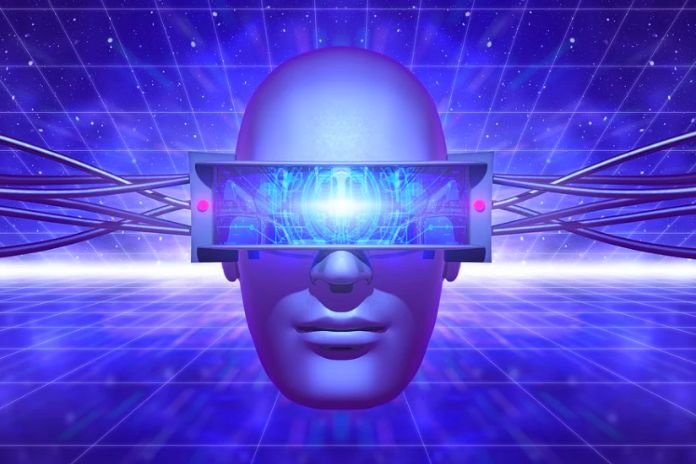Machines are getting closer and closer to human abilities. After artificial intelligence simulates the human brain, the novelty is computer vision (VC), which processes images of the natural world and works similarly to our eyes.
The technology promises to revolutionize the market and has already been used in companies’ quality and safety processes. Have you ever imagined yourself going to work in an autonomous car, that is, one that moves without a driver? This is another possibility driven by computer vision because it is thanks to it that the vehicle can recognize and respect traffic signs. Curiosity hit there and stayed. So, check out everything you need to know about the concept already among us!
What Is Computer Vision?
Computer vision is one of the fields of artificial intelligence and is characterized by replicating the functions of the human eyes. To do so, it uses state-of-the-art software and hardware, which together are capable of reconstructing, interrupting and understanding a 3D image through 2D images, taking into account the properties of the observed scene.
We can quickly identify the details of objects around us with our eyesight. However, image processing done by humans requires more time and attention, which reduces agility in the work environment. VC can extract, analyze and understand detailed information quickly, analyzing a single image or sequence.
The tool also increases the quantity and quality of data collected, such as object diameter, volume, and temperature — information that cannot be seen through human eyes. In practice, this means that you have access to various data with greater precision.
It is worth mentioning that, despite being similar to machine vision, often used in industry 4.0 and which allows the equipment to observe and interpret environments to ensure high efficiency, computer vision differs by covering perceptions such as the human brain.
What Are Your Goals?
It can be said that the primary purpose of computer vision is to develop theory and technology to provide the construction of artificial systems with the ability to collect and analyze information from any image, including human traits.
Therefore, VC processes real-world images using the computer, allowing the machine to interpret visual information. Because of this, it can be used to perform tasks in different business sectors to perform a systematic analysis of large amounts of data.
This happens in six steps:
- image acquisition: captures the image through cameras;
- restoration and enhancement: adapts and optimizes the acquired visual data, being able to remove noise, apply filters and use image rotation;
- segmentation: isolates characteristics of objects to be analyzed later;
- extraction of attributes or features: obtains relevant data from the highlighted regions or objects;
- classification and recognition: differentiate the objects identified in the image and group the parameters according to the detected pixel regions;
- Decision: interprets the analyzed information and, from there, determines which procedure should be performed.
Once a pattern is recognized, the computer vision machine can initiate actions automatically, fulfilling the required sequence for completing the activity. For example, in the case of the autonomous car, the technology processes traffic signals and issues commands for the vehicle to stop or proceed.
In Which Areas Can Computer Vision Be Applied?
According to a study by Grand View Research, the computer vision market will grow 7.6% between 2020 and 2027. This is because the technology is quite democratic, as it can be applied in several areas for the most diverse purposes. See in which segments the novelty is already booming.
Retail
Control of retail activities is essential to ensure operations and customer service smooth running. With VC, it is possible to monitor customers’ waiting time in queues, map heat zones and check areas with little movement.
In addition, the technology counts the number of people inside the establishment to avoid overcrowding. It checks the level of stock supply, pointing out the need for the replacement of goods.
Industry
The industry is one of the sectors that most benefit from computer vision. It can create a series of products with this technology, such as the autonomous car and other machines that scan and interpret authentic images.
The concept also benefits industrial processes. For example, quality inspection carried out on my camera to detect production failures, counting raw materials and finished and available items on the production line, asset management and maintenance, and identifying fraudulent behavior.
Health
The implementation of VC in the health area contributes to increasingly advanced procedures. Among them is the detection of diseases based on image recognition, the measurement of body temperature by monitoring cameras, and faster and safer surgeries. In times of a pandemic, the tool can still be used to check if people are wearing a mask inside an establishment and thus reduce the chances of contamination.
Safety
Monitoring spaces is an important initiative to make them safer. In this sense, machines with VC can range from identifying the beginnings of flooding and fires to pointing out if someone in the room is using an object prohibited in the place and then triggering a preventive action.
What Are Its Main Advantages And Limitations?
Due to the numerous benefits that computer vision offers, its popularization is only a matter of time. This technology can reduce costs and improve the quality of operational processes and, consequently, final products in the industry.
After all, it works to identify wrong patterns and flaws that the human eye cannot perceive. With this, the company also improves its decision making since it has the opportunity to anticipate possible problems, avoiding the inconvenience and more significant expenses.
However, some points still require special attention. Video image processing, for example, in real-time and with a low lag period in the cloud environment is lacking, as most scenarios are only viable with the adoption of edge computing.
Also Read: Digital Transformation: The Evolution Of IT And Communication












